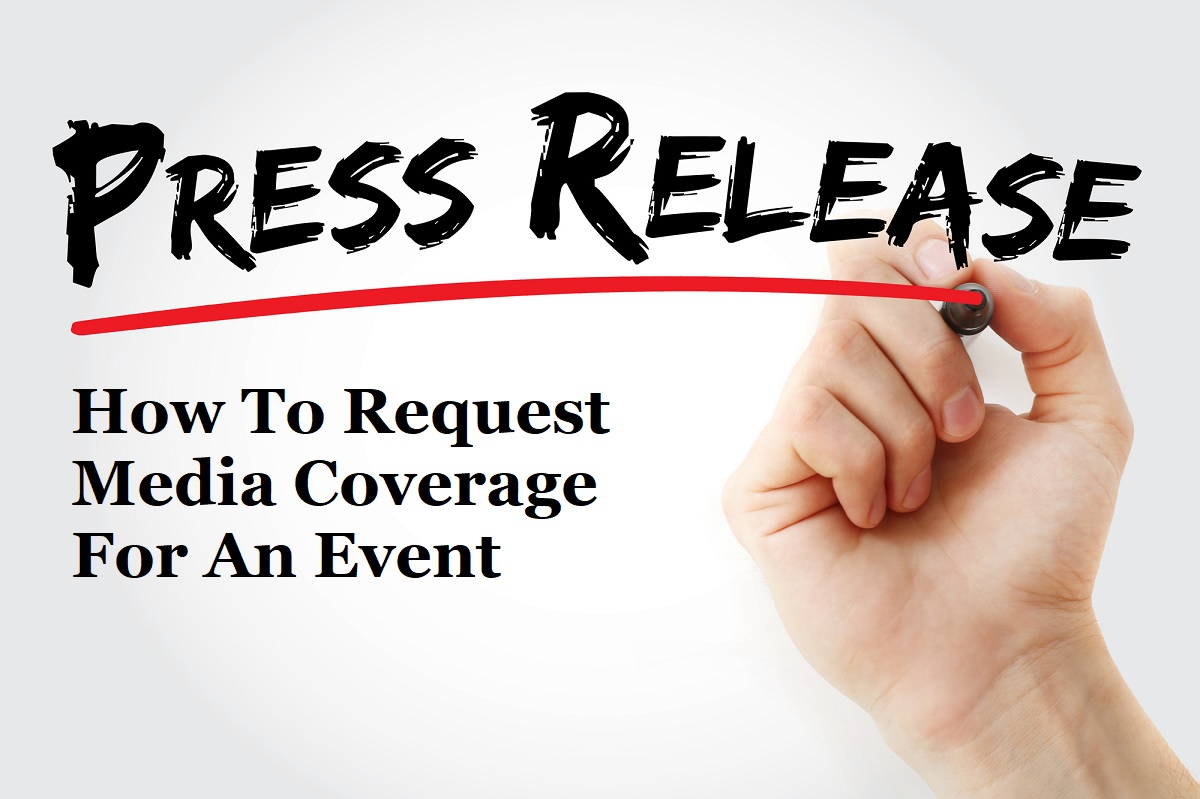How To Request Media Coverage For An Event

Now, Let’s Discuss The Commonly Asked Question, “How To Request Media Coverage For An Event?”
The Following Advice Is Provided On “\How To Request Media Coverage For An Event.
Choose Your Goals:
The first step is to determine why you want the media to cover your event. Consider your intended audience, your point of view, and the desired result of the reporting.
Write A Press Release:
Write an attention-grabbing press release for your event that contains crucial details like the objective, date, time, location, notable participants, and any distinguishing features. Ensure that it is amusing, succinct, and understandable.
Establish A Digital Library:
Pick the relevant media venues, such as websites for blogs, newspapers, magazines, radio, TV, and television. Find out how to reach the periodicals that commonly cover events like yours.
Locate Journalists Or Reporters:
Find specific authors or journalists who have previously shown an interest in your subject or covered events similar to your own. Make it more personal by addressing the recipient by name in your email pitch.
Develop a Targeted Pitch:
In an email addressed to the journalist or media outlet, briefly outline your event’s characteristics and why the recipient would find it intriguing. Focus on how your event promotes their careers and try to tailor each pitch to their needs.
Continue:
Give the journalists some time to consider your proposal, but don’t be hesitant to get in touch with them again a few days later via a polite and brief email or phone call. When speaking, be mindful of the journalist’s obligations and timetable.
Provide Special Opportunities or Access:
Give the media exclusive access or opportunities, including private interviews with speakers or VIP visitors, early access to event materials, or behind-the-scenes reporting. As a consequence, they could pay closer attention to your event, which would enhance the quality of their reporting.
Hand Over A Press Kit:
Create a thorough media kit that includes high-resolution event images, logos, speaker bios, background information, fascinating facts, and anything else that could aid in media coverage.
Offer On-Site Assistance:
Have a specialized media liaison on hand to assist journalists, offer them further information, or set up interviews and photo opportunities.
Follow Up And Show Appreciation:
After the event has taken place, write an email of gratitude to the reporters or media outlets that covered it. Thank you for the publicity and offer to help if any articles or events are planned.
We trust you were successful in locating the response to your question about “How to request media coverage for an event.” Remember that media attention must be earned; it cannot be given. Always behave professionally, persevere, and take the initiative. Additionally, you must modify your plan as necessary.
How To Write A Press Release For an Event
Let’s Start By Discussing The Query, “How To Write A Press Release For an Event?”
After talking about “how to request media coverage for an event,” we’ll move on to “how to write a press release for an event.” We will discuss a few quick and easy methods you may use to draft a press release for an event.
Title:
Start the debate off with a snappy heading that sums up the circumstance. Make it intriguing enough for journalists to want to read more.
Dateline:
Indicate the locations, hours, and countries to whom the news release will be sent.
Introduction:
Provide a succinct summary of the incident along with the name, date, time, and place. Promote inquiry and convey the atmosphere of the event.
Additional Information:
In the paragraphs that follow, include extra information about the occurrence. Include important details such as the objective, the topic, the target audience, and any eminent visitors or speakers. Identify the important modifications, being sure to emphasize any unexpected ones.
Quotation:
Include one or two quotes from the organizers, notable guests, or sponsors to give the press release credibility and a personal touch. Quotes have to inspire readers, present fresh viewpoints, or explain the significance of the occurrence.
Important Information:
If there is any extra information in which journalists would be interested, such as registration details, ticket prices, contact details, and website or social media links, provide a succinct overview. Even if the current version of this component is straightforward and simple to comprehend, you still need to gather all relevant data.
Text That Is Vague:
Give a one or two-sentence synopsis of the event’s sponsor. Give a brief overview of your history, achievements, and contact details. Every news release that the organization releases has this section.
Communicate With The Media:
Include the name, phone number, email address, and any other pertinent information for the person who will answer media inquiries. By doing this, it will be easier for journalists to get in touch with you for an interview or further information.
To Sum Up:
To visually denote the press release’s conclusion and to distinguish it from any notes or further content, use “###” or “-END-“.
Formatting
Use conventional font sizes and formatting in a polished, professional style, such as Arial or Times New Roman. Use a template or framework to deliver information in press releases in a consistent manner. Take care not to overuse terms in bold or italics.
Keep in mind that a press release must be brief and contain all pertinent details in a logical order. It must make an effort to grab the attention of reporters and draw attention to the aspects of your event that will attract or fascinate its audience. You ought to should be able to create a press release for an event by this point.
Source: https://www.abcbnews.com/2023/10/05/how-to-write-a-press-release-for-an-event/



